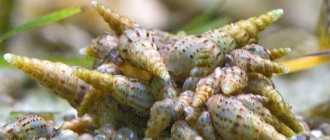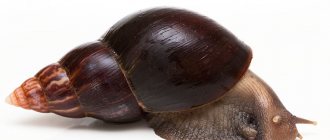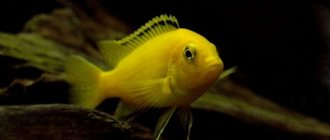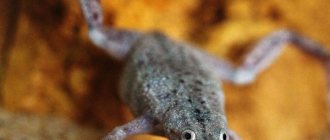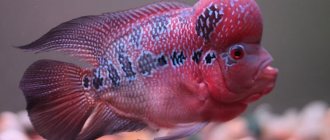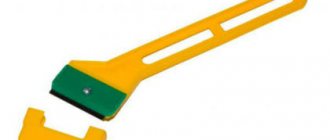The aquarium requires constant care. This includes maintaining the necessary parameters of the aquatic environment, regular feeding, and much more. Sometimes you wish that at least some of the duties could be performed automatically, without the participation of the owner. And it is possible.
Moreover, in the most environmentally friendly way - by introducing organisms into the aquarium that clean it. First of all, from algal fouling, which sooner or later begins to fill the container.
For us, work is a way of life for them.
Aquarium cleaners, of course, do not clean out of request or out of a sense of duty. They are simply reproducing thousands of years of behavior shaped by natural selection.
- Herbivorous organisms participate in eating algae - in nature they also clean water spaces, it’s just that the volume of a natural pond or river is so large that this work remains unnoticeable.
- Sometimes an aquarist may also need predators - to get rid of some unwanted inhabitants, which are troublesome and not completely safe to remove by chemical means or physical removal.
All animal helpers can be classified into three different groups: molluscs, fish and arthropods.
Shellfish
This group includes various types of snails. Some of them feed on algae, others on small animals, including their fellow creatures, whose presence in the aquarium is undesirable.
Theodoxus
Small snails whose shell grows up to 1 cm in diameter.
The coloring of the shell is quite interesting - there are spots, notches, grooves and other dotted patterns covering an overall gray or brown background. Thus, in the aquarium, these soft-bodied animals partly perform a decorative function. But their main purpose is to combat algae plaque. The snail prefers to move on hard surfaces - glass, thermometer, stones, grotto walls.
After all, it is these objects that are most often covered with a greenish coating, which has to be cleaned with a brush when removed from the aquarium.
It is believed that this love of theodoxus for solid bases comes from their way of consuming diatoms. The latter have a rather dense shell. By clinging to hard surfaces, the snail seems to crush its food with its own body before eating.
Neretina zebra
These individuals are larger - they grow up to two and a half centimeters under favorable conditions. The coloring gave rise to the name: alternating dark stripes with light yellow or ocher stripes does the job. They effectively deal with algae, but are quite expensive.
The fact is that in captivity these mollusks reproduce extremely reluctantly, and they are brought from distant Africa. They are quite sensitive to water temperature and its purity. If the parameters are not suitable, they crawl out into the air, as they can spend some time outside the aquatic environment.
If you often see a neretina crawling above the water's edge, this is a signal that it is uncomfortable in the aquarium.
Horned Neretina
A distinctive feature of this type of snail is the bony processes that appear on the shell in random order.
The dimensions are small - no more than one and a half centimeters.
“Stags” have earned special love for their ability to penetrate hard-to-reach places in the aquarium - into crevices between stones, narrow grottoes, and thickets of plants.
- In addition to the usual places for other snails to eat algae - hard surfaces and objects - aquarium plants with hard and wide leaves, for example, anubias, can also be cleaned.
- Snails are not prone to escape, so you don’t have to worry about the fact that there is a gap between the cover glass and the side.
Septaria
The specific name of this snail in Russian is porcelain. This is probably due to the specific color of the shell - it has a beautiful motley pattern. A distinctive feature is the shape of the “house” - it is flat and resembles a turtle shell.
- Septaria lives in an aquarium for about two years, but requires fairly clean water, saturated with oxygen and filtered. During this time it grows up to 3 cm.
- It sticks very tightly to the walls of the aquarium, cleaning them until they are completely transparent. It is completely safe for cultivated plants.
Ampullaria
This snail has been well known to aquarists since the beginning of the 20th century. It has quite impressive dimensions - in an aquarium it grows up to 5 cm. The horny plates in the mouth area - the radula - are capable of grinding plant fragments of almost any hardness.
- A small aquarium can be cleared of fouling very quickly. However, there are a number of nuances: snails will actively eat algal plaque only if they have no other food.
- When fed with food of animal origin, apple apples easily switch to bloodworms and even pieces of raw meat that sink to the bottom.
If fish food does not reach them, they may begin to eat aquarium plants. Therefore, the use of apple apples as cleaners requires certain body movements from the aquarist.
Helena
Another type of gastropod snail that has a very narrow specification is that they are predators.
What is the use of them in an aquarium, where the owner himself regulates the population of the inhabitants. But there are organisms whose growth and reproduction are quite problematic to limit. For example, the well-known coils, which reproduce under a variety of conditions, can fill the aquarium in a couple of months.
Helena, released in the amount of two or three individuals, will destroy these unwanted residents, and entirely by biological methods.
Caring for a saltwater aquarium
Working with the marine ecosystem is quite complex; it can only be trusted to professionals with sufficient knowledge and experience. Our staff is well versed in cleaning saltwater ponds.
Corals and other invertebrates are cleaned carefully and carefully, without disturbing their integrity. Gentle creatures are sensitive to any touch. Particular attention is paid to the quality of rinsing water. Only if all rules and regulations are observed can the health of the marine ecosystem be preserved.
Arthropods
Crustaceans in the aquarium are kind of orderlies: they destroy the remains of food that has fallen to the bottom, and also pick up dead fish. If there are crayfish or shrimp in the container, you do not have to worry about removing the dead fish, unless their size is too large.
Crustaceans are fully responsible for the cleanliness of animal residues, but some types of shrimp actively eat algae, and those that are so annoying in cultural fish farming and plant growing.
Amano
The name in the Russian-speaking environment was given to this species by the famous Japanese aquarist, who introduced individuals for life in a home aquarium.
The real name is Caridina multidentata.
These shrimp grow up to 6 cm and love neutral or slightly acidic water of 23 - 26 degrees.
- With a sufficient number of specimens in the population (about 1 shrimp per liter, they are able to completely remove plaque in a short time). However, for this they must receive a minimum of food from outside.
- Therefore, in the combined “fish + shrimp” container, measures must be taken so that not a lot of food reaches the latter, otherwise the crustaceans will prefer tasty protein food to hard algae.
The Amano shrimp has gained universal love among landscapers, because it is in planted aquariums that an algal outbreak is most likely and at the same time undesirable. This type of shrimp effectively fights the hated thread.
Unfortunately, Amano breed reluctantly at home: salt water is needed for the development of larvae.
Neocaridins
These are dwarf shrimp native to Southeast Asia. They reach only 1 cm in length as adults, which does not prevent them from successfully feeding on lower algae without touching higher plants.
Neocaridins are ideally suited for breeding in mono-aquariums, that is, shrimp tanks for beginning aquarists. They are unpretentious, and it is quite easy for them to provide the necessary conditions. You just have to make sure that the concentrations of certain substances are kept within acceptable limits.
Some of the most dangerous compounds for shrimp are substances containing copper. But the advantage can be relatively easy reproduction under the right conditions - the population will quickly grow even without special measures.
Fish
It is the fish that are expected to be most effective in cleaning the aquarium. In addition, fish are still the main inhabitants of most aquariums.
Poeciliaceae
These viviparous fish eat algae quite well, especially softer ones, like filamentous algae. Those who have observed guppies, swordtails and mollies have noticed that their lower jaw works like a scraper. However, it is worth saying honestly: livebearers are unable to clear the aquarium of fouling even in large quantities.
Swordtails
Mollies
Guppy
It is not advisable to keep fish on a starvation diet to encourage them to eat algae. Therefore, the task of cleaning poeciliids is to help other cleaners in complex biological care.
Brocade Pterygoplichthus
The luxurious chain-mail catfish opens the list of vertebrate cleaners. With a large aquarium, it can grow up to 30–40 cm in length. With such a size, even large predatory cichlids are not afraid of him. But the best thing is that the mouth opening, equipped with horny plates, forms a dense sucker.
No algal fouling can withstand such a tool. The omnivorous nature of pterygoplicht allows it to be fed any live frozen food that sinks to the bottom, as well as scalded lettuce, spinach, and zucchini.
True, it is hardly worth putting small and slow fish in an aquarium with it - they can be eaten inadvertently, without malicious intent.
Ancistrus
Another representative of the chain-mailed catfish with a sucker, only this time much smaller in size. Its appearance is very original and serves partly as protection, partly as camouflage - it is not easy to notice a motionless catfish in a small layer of silt.
When it comes to cleaning the aquarium from fouling, they are not in first place, but they win due to other factors: their peaceful nature and appearance.
Siamese algae eater
One of the most effective cleaners from the carp family. A couple of algae eaters in a hundred-liter aquarium can rid it of all unwanted types of algae, including black beard.
At a young age, algae eaters eat unwanted flora very actively, but with age this ability is gradually lost: partly this is due to the laziness of adult fish, partly with getting used to more nutritious and accessible aquarium food.
Timing and cost
Cleaning your aquarium quickly and inexpensively will ensure cleanliness and order. Specialists registered on the Yudu website will clean freshwater and marine aquariums located anywhere in the capital in the shortest possible time.
The timing and cost of completing the work are negotiated with the contractor, who can be selected based on:
- reviews from aquarium owners who previously ordered cleaning of an artificial reservoir
- rating assigned by the YouDo website
- examples of work showing the results of cleaning an aquarium
By contacting Yuda to order cleaning of the contaminated bottom, you have an excellent opportunity to find a specialist who provides the services you need at an affordable price. Our specialists’ cost of cleaning services in most cases is significantly lower than that offered by many entrepreneurs and specialized aquarium maintenance companies.
When creating a task on youdo.com, you can independently indicate how much it costs to clean the bottom of an aquarium, focusing on average prices.
